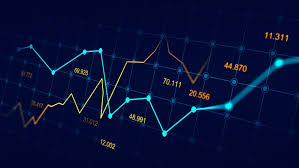
Choosing the Right Trading Platform for Forex: A Comprehensive Guide
In the fast-paced world of Forex trading, the selection of a trading platform plays a vital role. A robust trading platform not only influences the effectiveness of your trading strategy but also enhances your overall trading experience. Whether you’re a novice or an experienced trader, understanding the features, usability, and reliability of a trading platform is crucial. For those looking for a reliable Forex trading platform, trading platform for forex tradingarea-ng.com offers a variety of tools and resources to support your trading journey.
What is a Forex Trading Platform?
A Forex trading platform is software that enables traders to evaluate prices and execute trades in the currency market. These platforms connect to a broker’s liquidity providers, allowing traders to execute their trades seamlessly. In essence, the trading platform serves as the trader’s interface with the Forex market, making its features and functionalities vital for trading success.
Key Features to Look for in a Forex Trading Platform
1. Usability: The user interface of the trading platform should be intuitive and easy to navigate. A cluttered or complicated interface can hinder trading efficiency.
2. Security: Security is paramount in Forex trading. Ensure that the platform employs advanced encryption protocols to safeguard your data and funds.
3. Variety of Trading Instruments: A diverse range of currency pairs and trading instruments available on the platform allows traders to embrace a broader trading strategy.
4. Technical and Fundamental Analysis Tools: Look for platforms that offer a comprehensive suite of analytical tools, including charts, indicators, and news feeds, which assist in making informed trading decisions.
5. Order Execution Speed: Fast and reliable order execution is crucial in Forex trading, where market conditions can change rapidly.
6. Customer Support: Reliable customer service can help resolve any issues and provide assistance when needed. Look for platforms that offer various support channels, including live chat, email, and phone support.
Types of Trading Platforms
There are several types of Forex trading platforms, each catering to different trading styles and preferences. Understanding these can help you make an informed choice:
1. Proprietary Platforms
Proprietary platforms are developed by brokers themselves and are tailored to meet their specific services. They usually come with unique features and tools that enhance the trading experience but may lack the flexibility found in widely-used platforms.

2. MetaTrader 4 and MetaTrader 5
MetaTrader is perhaps the most popular trading platform globally. MetaTrader 4 (MT4) is favored by retail traders for its user-friendly interface, rich features, and a vast selection of plugins. MetaTrader 5 (MT5) offers even more advanced features, including additional timeframes and trading instruments, making it suitable for a wider range of trading strategies.
3. Web-based Platforms
Web-based platforms allow traders to access their accounts from any device with internet connectivity. They eliminate the need for downloads or installations and are generally equipped with essential trading tools and features.
4. Mobile Trading Apps
For traders who prefer to trade on the go, mobile trading apps provide the flexibility of accessing trading accounts from smartphones or tablets. These apps usually have a simplified design and are essential for making quick trades from anywhere.
Platform Reliability and Performance
The reliability of a Forex trading platform can significantly impact your trading success. Look for platforms with high uptime percentages and minimal downtimes. It’s also essential to consider the platform’s performance during high market volatility, as a reliable platform should handle such conditions smoothly to allow you to execute trades without delays.
Understanding Fees and Commissions
Trading platforms often charge fees or commissions on trades, which can affect your profitability. Common fee structures include:
- Spread: The difference between the buying and selling price of an asset, which is typically the primary cost incurred by traders.
- Commission: Some platforms charge a flat fee per trade or a percentage of the trade amount.
- Non-Trading Fees: These may include withdrawal fees, deposit fees, or inactivity fees.
Before selecting a trading platform, ensure you thoroughly understand the fee structure and how it will impact your trading strategy.
Demo Accounts: A Safe Way to Test the Waters
Many Forex trading platforms offer demo accounts, allowing traders to practice with virtual currency before risking real money. This feature provides an excellent opportunity to familiarize yourself with the platform’s layout, tools, and functionalities without the pressure of real trades. Use the demo account to develop your trading strategy, test various indicators, and gain confidence before transitioning to a live trading environment.
Final Thoughts: Making Your Choice
Choosing the right Forex trading platform is a crucial step in your trading journey. Take the time to assess your trading style, preferred features, and specific requirements before making a decision. By focusing on usability, security, fees, and the variety of tools offered, you can enhance your trading experience significantly.
As you embark on your Forex trading adventure, consider platforms like tradingarea-ng.com, which provide a comprehensive suite of tools and resources that cater to traders of all experience levels. A well-chosen platform will not only facilitate your trades but also support your growth as a trader in the dynamic Forex market.
